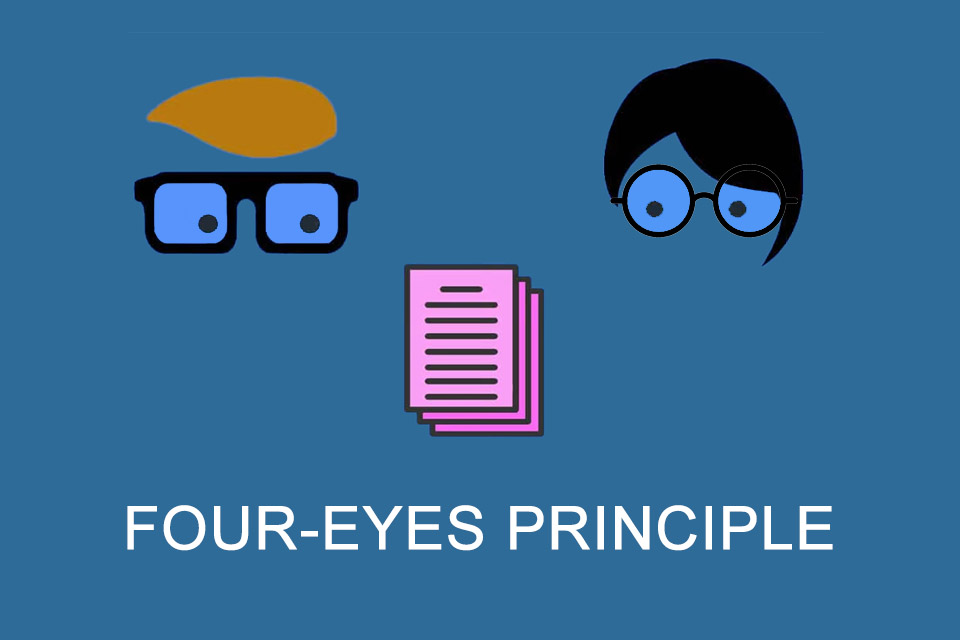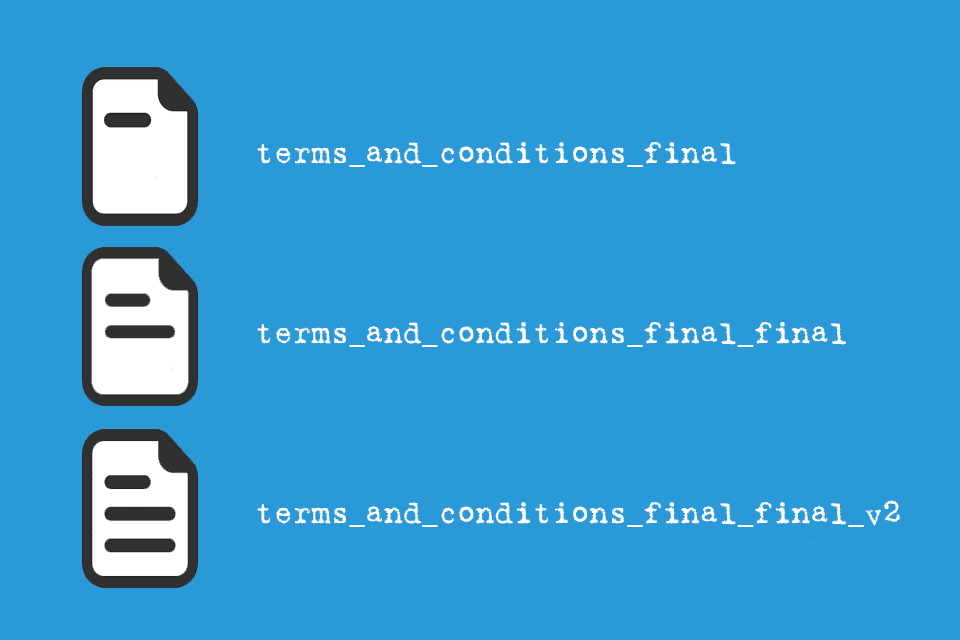What is the Four-Eyes Principle?
Smartpedia: The four-eyes principle is a quality control tool in which two people confirm or approve an activity, event, result or decision.
Four-eyes principle – an instrument of quality control
“Four eyes see more than two eyes” is a well-known phrase that describes the four-eyes principle. It states that two people must confirm or approve an activity, event, result or decision.¹ These two people act as controllers and usually take joint responsibility for confirmation or approval. Thus, the four-eyes principle is an instrument of quality control with the aim of ensuring quality, minimising errors or preventing misuse.
The four-eyes principle, sometimes called dual control principle or two man rule, can be found in almost all areas and disciplines of a company³:
- In purchasing, orders above a defined volume require the approval of more than one person.
- In tender procedures, the principle ensures that companies are treated as equally as possible and that corruption, for example, is made more difficult.
- In sales, the granting of discounts above a defined percentage requires confirmation by a superior.
- In accounting, payments above a defined amount must be approved by two employees. The keyword here is invoice verification.
- In software development, the principle is used, for example, in pair programming, where two programmers work together on one computer to solve a task.²
- In goods receiving, the principle ensures that the actual scope of delivery matches the articles and quantities on the delivery note.
- In production, it ensures that work results are produced with a defined quality before they are processed further elsewhere in the workflow.
And in marketing, the principle ensures that texts are only published if they have been proofread beforehand.
Four-eyes principle and separation of functions
In most organisations, employees take on defined functions. A software developer programmes, a marketing person promotes the service and a sales person sells it. Within these functional areas (in this example software development, marketing and sales) there are usually hierarchies: a head of development, a head of marketing and a head of sales, for example. The four-eyes principle can be applied in two ways:
- On the same hierarchical level, e.g. in the course of a peer review or a code review, or simply when one colleague looks at the work of another in order to ensure or possibly increase quality.
- Across hierarchical levels, e.g. when the sales manager approves a particularly low offer price from the sales employee or the managing director agrees to an investment proposal from the finance manager.
At the same hierarchical level, the four-eyes principle is a simple, quick and collegial tool for collaboration. Across hierarchical levels, it is an instrument for making decisions and, if necessary, minimising conflicts of interest.
The documentation of approvals and confirmations
It is nice when organisations define rules for scenarios in which the dual control principle is to be applied. It is even nicer when this is then practised accordingly in everyday organisational life and, if necessary, also documented. In addition to the classic signature on a document, tools have been offering mechanisms for many years with which approvals and confirmations can be digitally documented and, if necessary, also verified.
Frequently, those involved must identify themselves within a system with a login, password and sometimes also two-factor authentication in order to subsequently approve individual documents, instructions or payments or confirm decisions at the push of a button.
The systems provide the affected objects in the corresponding version with a time stamp and the information by whom the release or confirmation was issued. At the same time, the systems ensure through a previously stored rule set that corresponding actions in the workflow can only be carried out by those persons who are equipped with the corresponding rights.
Impulse to discuss
Notes:
[1] Some publications state that more than two people can be involved. Opinions vary as to whether this should still be subsumed under the four-eyes principle or then, for example, under the six-eyes principle. Alternatively, there is also talk of the multiple-eyes principle.
[2] Mob programming would therefore be a multi-eyes principle.
[3] Fortunately, the principle also applies in other areas such as the military. The use of nuclear weapons requires the confirmation of two persons, whereby in such a scenario the two man rule is more a safeguard mechanism than a quality control.
If you like the article or would like to discuss it, please feel free to share it in your network. And if you have any comments, please do not hesitate to send us a message.
And here you will find additional information from our Smartpedia section:



